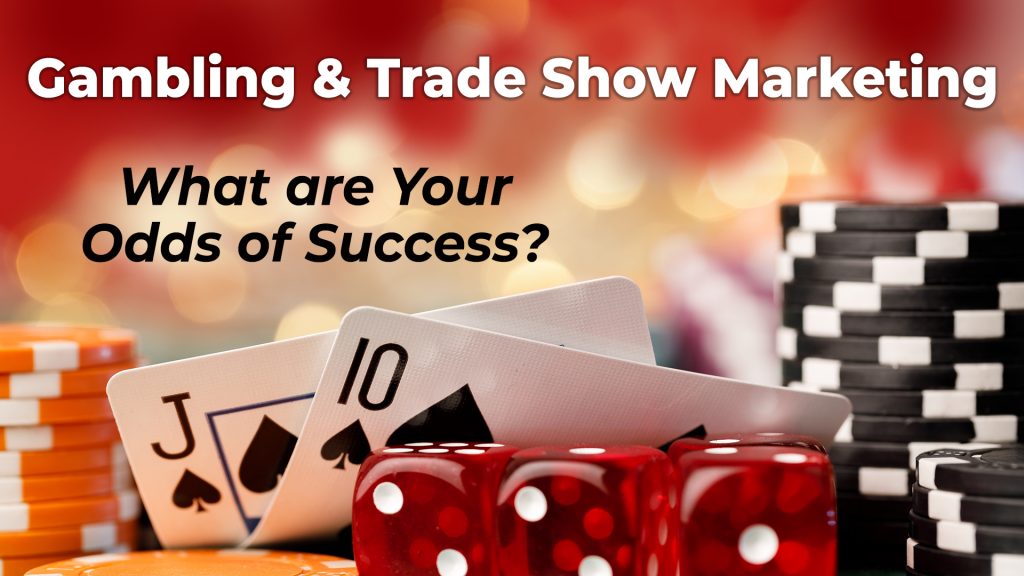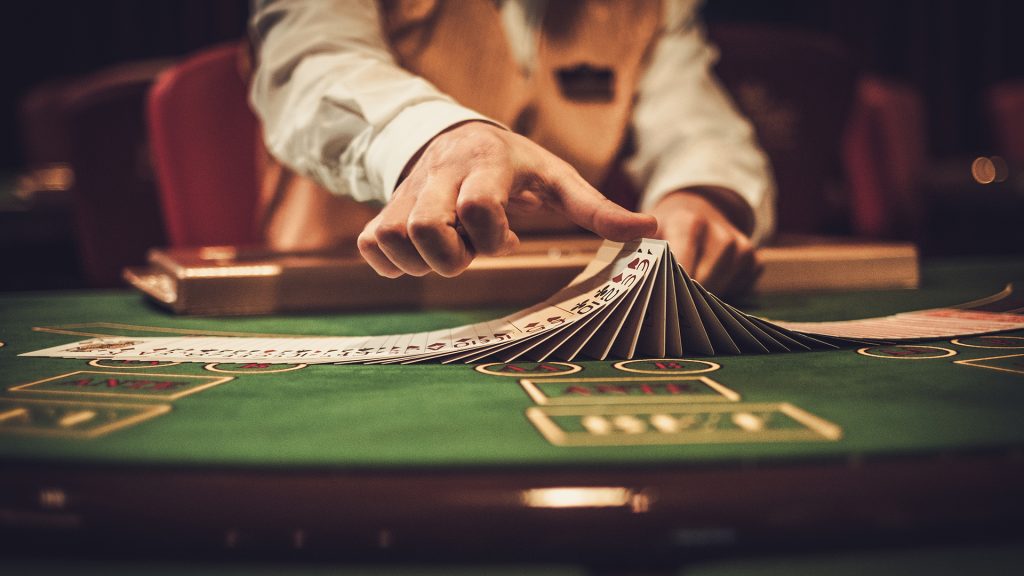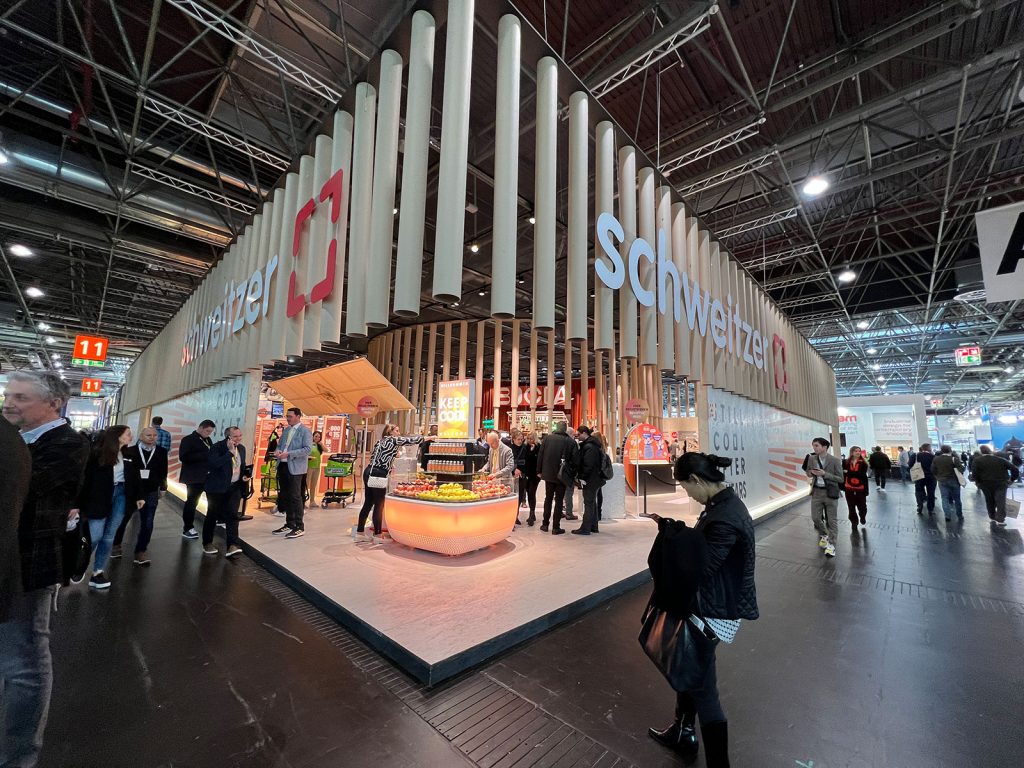
Ever wonder why so many trade shows are held in Las Vegas. Hint: It’s not because Donny Osmond and Carrot Top are headliners. It’s gambling. Frankly, I love gambling, even if I’m not much of a gambler. The chance to turn $20 into $1000’s, maybe even millions of dollars, is scary seductive.
Gambling may also be the reason I love trade show marketing. It’s playing the odds. Trade shows, just like all games of chance, have very specific odds. While there’s always going to be some luck involved, it’s up to the trade show marketer to choose what “games” they play and how much they wager. Frankly, some of us choose wisely… while others do not. There are no guarantees, only choices based on experience, research, and hunches.
What kind of trade show gambler are you? See below.
Powerball/Mega Millions Lotteries
While not Las Vegas gambling, it’s gambling we know and understand. It’s hard to resist the lure of a lottery when the prize approaches $500 million. You bet $2 to $100 and continue buying tickets until someone wins the grand prize. The odds of winning are not good, actually terrible, but that’s OK. It wasn’t cheap but it wasn’t a lot, and you were going to the convenience store anyway to get an energy drink. Many lottery players don’t even bother checking their tickets if they’re not the BIG winner.
The Multiplier Marketer
You’ve met this trade show exhibitor. They buy an inexpensive display, participate in the BIG show year after year, put little effort into it, and toss away most leads. But next year… they’ll land that multi-million dollar order, and it will all be worthwhile. They’ve bought into the whole “you can’t win if you don’t play” philosophy, which sounds suspiciously like “We go because, we’ve always gone to the show.”

Slot Machines
Who doesn’t love the noise, the lights, and the movement of slot machines? They’re fun and seemingly affordable. True, the odds aren’t great, but they’re better than the lottery, keno, or even roulette. The rules (if there are any) are easy to learn. Best of all, someone is always winning, because you hear the jackpots and the lights flashing. Keep at it, you’ll eventually break even if you just put another $20 into the slot machine.
Wonder Woman Marketer
Plug and play is hard to resist for many trade show marketers. After all, it’s the show organizer’s job to bring attendees to the show. Their hardest decision is which display to choose, and hopefully, the one they select (Wheel of Fortune) will have better odds than the other choices (Game of Thrones or Wonder Woman). Just keep playing you tell yourself and eventually (if you hold your head just right and wear your lucky shoes), you might land that one-in-a-million Progressive client.

Blackjack
In blackjack, you don’t control the cards, but knowing the rules and understanding blackjack strategy can improve your chances of winning. The casual blackjack player may win occasionally, but the professional blackjack player wins consistently. Skill and strategy will alter the odds just enough to give the expert a slight advantage over the house. And if they know how to count cards, then all bets are off for the house advantage.
Splitting Aces Marketer
Unlike slot machines, blackjack skills can be taught and strategies learned. There’s a wide range of trade show marketers in this category, but most have a working knowledge of the rules and regulations and the time to study them. Great marketers tap into the knowledge of those who have been successful at trade shows for years. There’s still some luck involved, but they try to control what’s controllable. And just like blackjack, the “house” will occasionally change the rules to make winning more challenging. It’s up to the exhibitor to find creative ways to improve their odds which can mean shifting to another show if the odds are better.

Poker
Unlike the games previously mentioned, the house makes its money by taking a rake, entry fee, or timed fee from the players. And just like with blackjack, knowing the odds and understanding poker strategy will improve a player’s chances of winning. Yes, there’s luck, but poker adds another dimension… reading people. In poker, it’s possible to have a losing hand and still win. Professional poker players study their opponents, not just while playing but also weeks or months in advance looking for “tells” that will give them an advantage. Preparation, focus, and decisiveness can be the difference between losing everything or winning not just the pot, but the tournament.
I’m All In! Marketer
The trade show marketer, who acts like a professional poker player, controls what they can control. That includes their exhibit, the show services, the location, the attendees, the pre- and post-show marketing, the staff, and the ROI or ROO. They recognize that a successful trade show is always possible if they improve their odds. They’re more likely to attract the right clients to their booth, provide them with a memorable experience, gather the appropriate sales information, and contact them promptly after the show.
But mostly, they’re in control. They don’t get distracted, and they don’t allow their team to play the slots when they should be sitting down for a game of poker.
Not Everyone Gambles
One important note: not everyone at a trade show is a gambler. Some don’t have to be because the “non-gamblers” control the games, set the odds, and determine the rules and regulations. They win the moment someone enters the building. It’s simply a matter of how much they win. There’s nothing wrong with that. In fact, we should all applaud any business savvy and smart enough to create a profitable strategy.
Always Bet on Yourself
As a trade show marketer, you have enormous power as an exhibitor. First of all, you get to choose which shows deserve your business. Not every show does, even if they’re The Major Show for your industry. Secondly, you can negotiate or influence rates, sponsorships, and the fees and regulations of future shows. Will you always be successful? No. But saying silent means the answer is always No.
Finally, smart exhibitors assume their trade show success depends on them, not the show organizers, not the General Show Contractor, not other exhibitors. They control the outcome and do everything possible to manage their expenses, their exhibit experience, and their pre- and post-show marketing. In other words, while they gamble, they always choose games where winning is in their control.
Classic Exhibits Inc. designs and manufactures portable, modular, hybrid, and custom exhibit solutions. Classic Exhibits products are represented by an extensive distributor network in North America. For more information, contact us at 866-652-2100 or www.classicexhibits.com.







